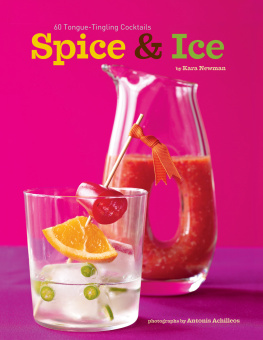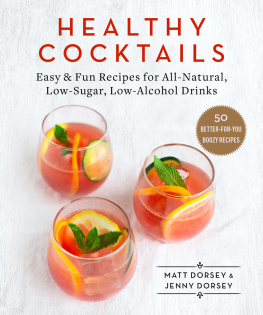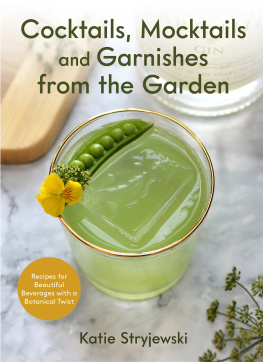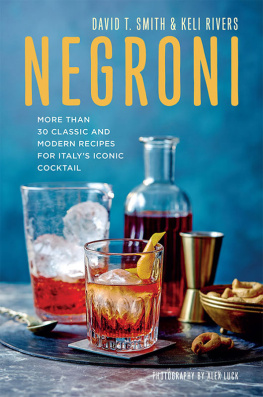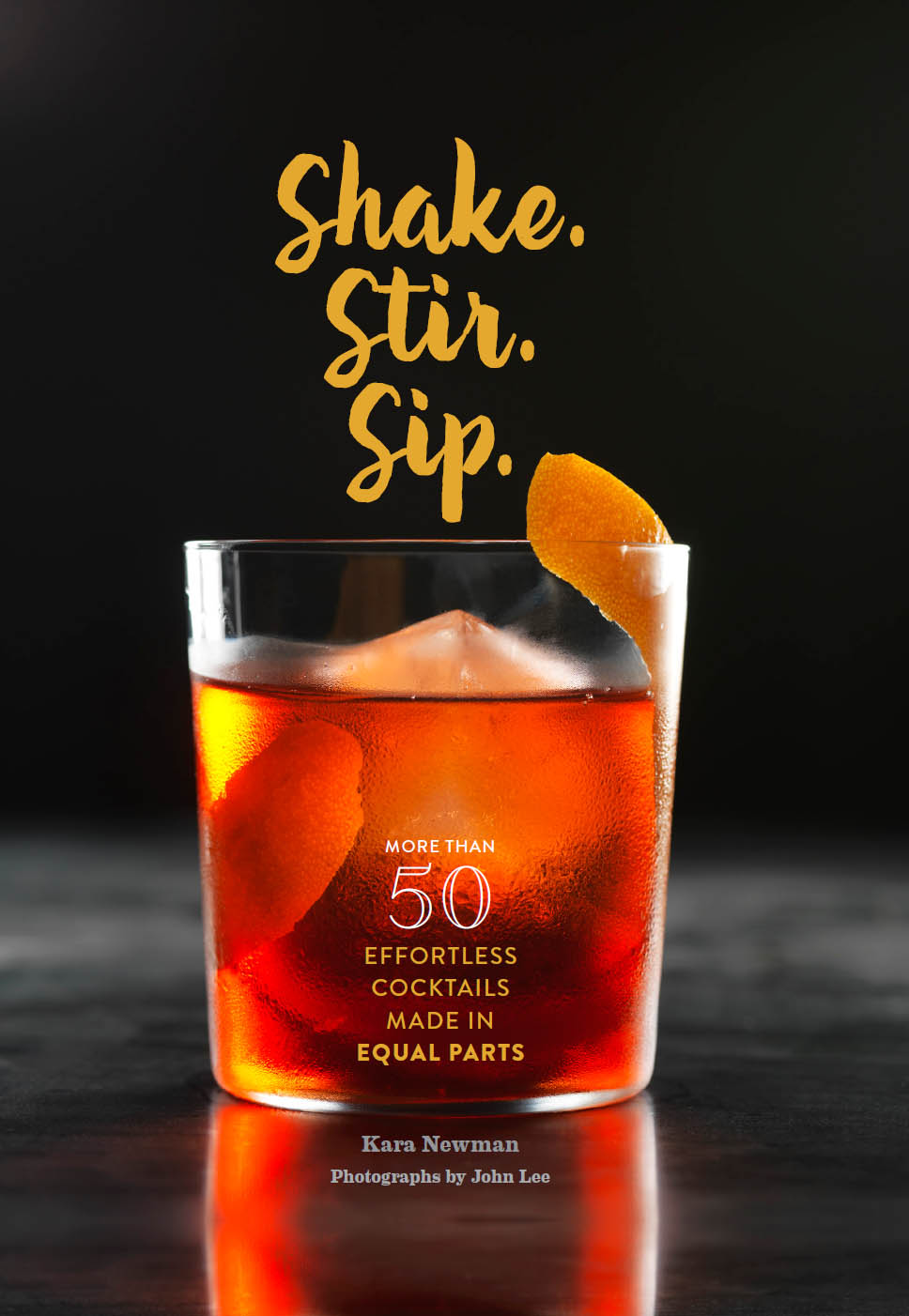


Text copyright 2016 by Kara Newman.
Photographs copyright 2016 by Chronicle Books LLC.
All rights reserved. No part of this book may be reproduced in any form without written permission from the publisher.
ISBN 9781452152745 (epub, mobi)
Library of Congress Cataloging-in-Publication Data
Names: Newman, Kara, author.
Title: Shake. stir. sip. / Kara Newman.
Description: San Francisco : Chronicle Books, 2016. / Includes index.
Identifiers: LCCN 2015044160 | ISBN 9781452152479 (hardcover : alk. paper)
Subjects: LCSH: Cocktails. | LCGFT: Cookbooks.
Classification: LCC TX951 .N547 2016 | DDC 641.87/4--dc23 LC record available at http://lccn.loc.gov/2015044160
Designed by Alice Chau
Photographs by John Lee
Drink styling by Eric Passetti & Will Herrera
Chronicle books and gifts are available at special quantity discounts to corporations, professional associations, literacy programs, and other organizations. For details and discount information, please contact our premiums department at or at 1-800-759-0190.
Chronicle Books LLC
680 Second Street
San Francisco, California 94107
www.chroniclebooks.com
Contents

Introduction
Ive been obsessed with equal parts cocktails for a long time. At first, I didnt know that they were a category of drinks. I just knew that they were impossible to screw up.
If youve never had (or made) one before, an equal-parts drink is just what it sounds like: A drink made with ingredients measured out in precisely equal proportions.
The first drink to hit my equal parts radar screen was the Negroni: gin, sweet vermouth, and crimson Campari. Im probably not alone in thatthe drink has had an amazing ascent over the past few years.
But once I started looking around, I couldnt believe how many cocktails measure out this waywhy hadnt I noticed it before? From the four-part box step of the Last Word (gin, lime juice, Maraschino liqueur, and Green Chartreuse) to the aptly named 50-50 martini (equal parts gin and vermouth), equal-parts drinks have long been part of the classic cocktail canon, and modern-day bartenders love them too.
And why not? After years of fussy, baroque cocktails, simplicity is back in style. We want easy elegance, streamlined recipes that work every time.
Let me be clear, easy doesnt mean dumbed down. Just ask any bartender who has tried to create an original equal-parts drink; finding that perfect balance can present quite a challenge. But once its achieved, its like magic. It just works.
The secret weapon? Ratios. For many (including me), a lightbulb goes on the minute you realize that cooking is all about ratios. Many sauces, for example, build on basic ratios, like one-part butter to one-part flour in a roux. Baking, too, has its ratios; the classic pound cake takes its name from early recipes that call for one pound each of butter, sugar, egg, and flour.
The same holds true of cocktails. This book focuses on drinks that have equal-parts ratios, just like a roux or a pound cake recipe. Houston, Texas-based bartender Bobby Heugel terms them equinox drinkscocktails made in perfectly equal proportions, similar to the equinox days when hours of daylight and darkness fall in equal measure. Some drinks also allow for a dash of bitters or a squeeze of citrus, but the basis is always the equal-parts template.
These templates arent necessarily set in stone. Theyre a starting point, meant to be used, tweaked to your preference (adding or subtracting sweetness, for example), or built upon with garnishes and dashes and spritzes.
I wasnt surprised to find that some bartenders utilize these templates as teaching tools. We start with drinks that are 1:1drinks made with two ingredients in equal proportionthen drinks with three parts, then four parts, explains Scottsdale, Arizona-based mixologist Jason Asher. Once you understand the bloodlines, the families, its easier to understand how to make drinks.
Another score for the equal-parts drink; they are a breeze to measure and mix, for one or for many. Wherever possible, Ive noted where drinks can be easily scaled up to serve a group, and the section on party planning is designed to help kick up your cocktail game for gatherings. (Self-promo alert: If youre craving still more advice on big-batch drinks, I hope youll consider picking up a copy of my other book, Cocktails for a Crowd.)
Give these drinks a spin, and youll see why the Negroni has captured bartenders imaginationsalong with other equal-parts cocktails.
Stocking the Equal-Parts Bar
LIQUOR CABINET
Whether youre building a bar from scratch or just adding a few well-chosen bottles to an existing collection, heres a guide to spirits called for throughout this book. Ive called out a few brands I recommend for mixing in cocktails, but this is by no means a comprehensive list. (You can also view my ratings on Wine Enthusiasts website if youre seeking a deeper-dive into brands and tasting notes.)
MUST-HAVE BASE SPIRITS
Brandy
Brandy comes in a very wide range of prices and provenances. The only guideline in my mind is to get one that you enjoy sipping straight up, and it will make your mixed drinks wonderful, too.
Cognac is the classic brandy, made in Frances Cognac region, and a value-priced VSOP (basically, a brandy thats in the middle of the age range, delicious but not too old/rare to mix) is a useful building block for a bar, although I wouldnt turn my nose up at a well-made American brandy either. Meanwhile, Calvados, Normandys apple brandy, and Americas applejack both are delicious but Id keep them on the nice-to-have list.
Recommended brands: Cognac Ferrand, Germain-Robin
Gin
You cant go wrong with a bottle of dry gin. London Dry Gin is the most common type youll find, noted for its pronounced juniper note. But other types of dry gin exist, such as New Western or New American gin, a style that showcases other botanicals (like citrus peels, spices, or herbs), usually made by producers in North America, including many smaller craft producers. If you prefer an earthier, more neutral style with as little juniper as possible, Plymouth gin is the way to go (and in this book, gin versus dry gin means feel free to choose either style). Finally, lightly sweetened Old Tom Gin is called for in one recipe in this book. Whatever gin you choose, dont skimp. A good gin should appeal to you enough to drink in a well-chilled, minimally adorned martini.
Recommended brands: Tanqueray London Dry Gin, Haymans Old Tom Gin
Rum
White rum and dark rum (aged rum) are staples. The former (its barrel aged, but the color is filtered out) is ideal for mixing Mojitos and other summery drinks, while dark rum (which spends more time in the barrel and takes on gorgeous caramel and toffee tones) is great for straight-up sipping and mixing into tropical drinks.
Next page

